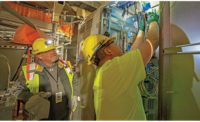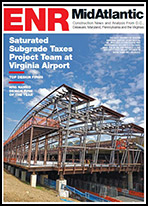More than a year before the first exhibits open at the Perot Museum of Nature and Science, a massive jigsaw puzzle is on display at the construction site in Dallas' Victory Park. Crews are wrapping the 14-story building in 725 precast panels—each with unique dimensions—to create the unusual textured exterior of the $185-million museum. Getting the complex design to fit properly required precise coordination of the project's engineering, construction, fabrication and installation phases.
“This is the most difficult and challenging precast job I've ever seen,” says Christopher Wolfe, senior project manager for Balfour Beatty Construction, Dallas.
Museum stakeholders selected architect Thom Mayne and his firm, Morphosis, Culver City, Calif., as project designer because of his reputation for creating buildings that exude an institution's mission, says Frank-Paul King, immediate past chairman of the museum's board of directors and chairman of its building committee.
“We wanted people to say, 'Wow, that has to be the Museum of Nature and Science,'” King says. “The building is meant to expand on two visual thoughts. We lifted up the earth and shoved a building under a West Texas green roof, and jutting out of that roof is this incredible sedimentary-like geologic formation.”
Morphosis explored different exterior options before deciding on concrete, a natural material.
“The idea was Dallas is a concrete town; let's celebrate that,” says Arne Emerson, Morphosis project architect. “These sinuous waves and forms around the exterior are a result of trying to push precast concrete to a new level.”
Balfour Beatty broke ground on the project in April 2010, with shell and public spaces set for completion in August 2012.
Concrete subcontractor Gate Precast, Jacksonville, Fla., joined the team early to assist with the design. Using building information modeling, Gate could leverage the models to aid in fabrication and installation of the panels.
“We couldn't have done this job without BIM and the other trades sharing in the 3D modeling,” says Dean Gwin, president and COO of Gate Precast. “There were months and months of coordination.”







